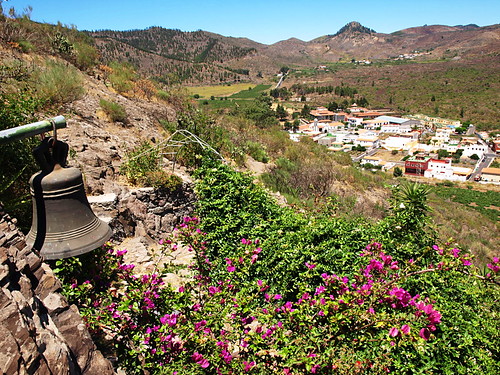 The eponymous capital of the municipality of Santiago del Teide, which includes Puerto de Santiago and Los Gigantes, is located 1000 metres above sea level in the stunning Valle de Santiago.
The eponymous capital of the municipality of Santiago del Teide, which includes Puerto de Santiago and Los Gigantes, is located 1000 metres above sea level in the stunning Valle de Santiago.
The gateway to Masca, Santiago del Teide still retains a very traditional feel and it’s not unusual to see elderly women of the village clad in their habitual black skirts, black blouses and straw hats, and elderly men in their felt fedoras.
Part of the ancient Menceyate (Kingdom) of Adeje, Santiago del Teide has a strong Guanche heritage. After the Spanish conquest the land in Valle de Santiago was of little importance to the new colonies, being unsuitable for the production of sugar cane, and so it was given to Diego Mencey, the former Guanche King, Pelinor and the Guanche. Some claim that the Guanche heritage is the reason that the are produces more than its fair share of beauty queens.
The valley hasn’t always been the tranquil place it is now. On the morning of the 18th November 1909, Chinyero erupted; the last volcanic eruption on Tenerife. A river of molten lava crept towards El Tanque and Icod, breaking off into two subsidiaries that threatened to engulf Las Manchas and Valle de Arriba. The two communities were only saved by divine intervention after villagers carried statues of Santa Ana, Christ and the Virgin Mary to the lava flows and stopped them in their tracks.
Santiago del Teide is a beautiful base for exploring the countryside around the Valle de Santiago and is especially suitable to those visitors who want to experience some great walking on Tenerife.



9 Trackbacks / Pingbacks